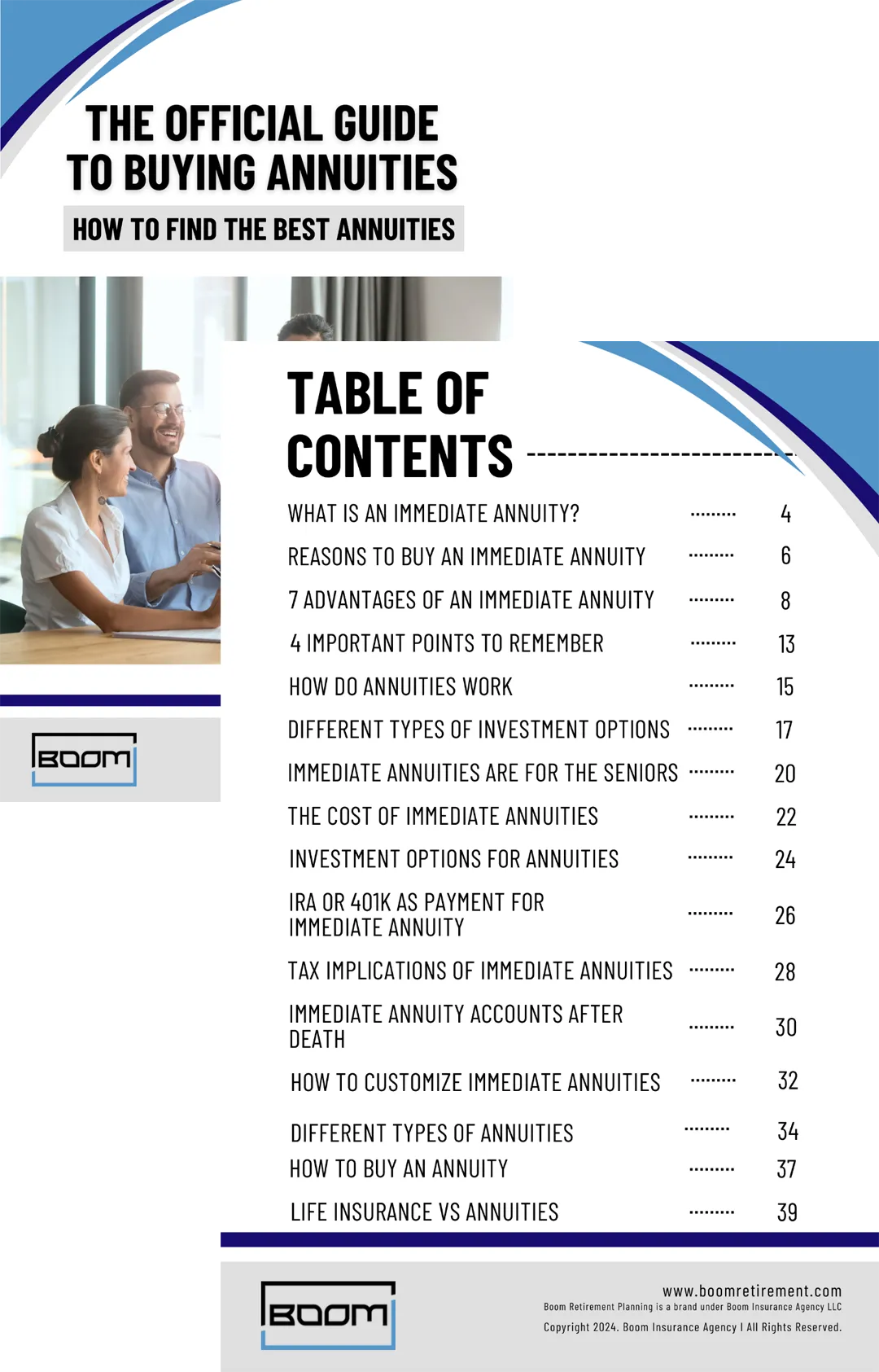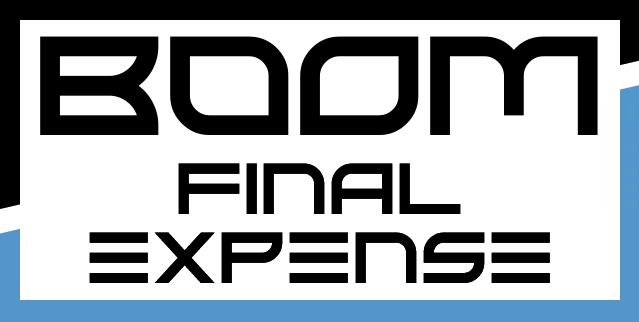
BOOM RETIREMENT SOLUTIONS
Strategies for Boosting Retirement Income

Top Retirement Cash Flow Risks
Why you need this Retirement Toolkit
Will outlive your retirement savings?
Will taxes and inflation erode your Retirement Nest Egg?
Will you head into retirement using an Accumulation Strategy or a Decumulation Strategy?
Will you maintain your lifestyle in a market downturn?
Are you prepared for RMD's and IRMAA?
BOOM RETIREMENT PLANNING
Strategies for Boosting Retirement Income
If You Ask 50 Financial Advisors,
"What is the best way to retire?".
You will get 50 different answers!
That is because despite all their training and certifications,
financial advisors each bring their own perspectives, experiences, and
biases to the table, leading to varied approaches and strategies tailored to their
unique understanding of the market, client needs, and risk tolerance.
Economic Science and Math proves...
There is Only One Optimal Way to Retire
Over 6 Decades of Research Created the 7 Steps Below.
Develop a Plan: Assess your financial situation, retirement goals, income sources and monthly budget for expenses.
Secure Lifetime Income: Consider products like private pensions for guaranteed income.
Maximize Social Security: Optimize benefits by understanding your options; delaying to 67 or 70 can help.
Diversify Investments: Build a balanced portfolio—30% cash value life insurance, 30% lifetime income, 40% growth assets.
Prepare for Health Care Costs: Budget for health expenses, including long-term care, which most seniors will need.
Use Tax-Efficient Strategies: Consider Roth conversions to reduce retirement taxes.
Stay Active and Engaged: Pursue activities for mental, physical, and emotional well-being in retirement.
Our Blog

Annuities: The Safest Way to Secure Guaranteed Income for Life
Imagine a retirement where you never have to worry about running out of money, where you receive a steady, reliable income stream for life, and where you’ve divorced the IRS for good. This dream can become a reality through the strategic use of annuities, particularly when combined with Roth conversions. By leveraging the premium bonuses and market indexing of certain annuities, you can cover the taxes on converting your IRA or 401(k) to a Roth account, ensuring tax-free growth and withdrawals in the future. Let’s explore how annuities can be your safest bet for a worry-free retirement.
Main Body
The Challenge of Retirement Planning
Retirement planning often feels like navigating a minefield. With the uncertainty of future tax rates, market volatility, and the fear of outliving your savings, many retirees find themselves anxious about their financial future. Traditional retirement accounts like IRAs and 401(k)s, while valuable, come with strings attached—namely, taxes. Required Minimum Distributions (RMDs) can force you to withdraw more than you need, potentially pushing you into a higher tax bracket and increasing your Medicare premiums.
The Solution: Annuities and Roth Conversions
Annuities, particularly Fixed Indexed Annuities (FIAs), offer a solution to these challenges. An annuity is an insurance product that provides a guaranteed income stream for life, offering peace of mind in retirement. When combined with Roth conversions, annuities become even more powerful.
A Roth conversion involves moving your traditional IRA or 401(k) funds into a Roth account. This conversion requires you to pay taxes on the converted amount now, but the future benefits are substantial: tax-free growth and tax-free withdrawals. By leveraging the features of certain annuities, you can effectively cover the tax cost of the conversion, making it a smart financial move.
Leveraging Premium Bonuses
One of the most compelling features of Fixed Indexed Annuities is the premium bonus. Many FIAs offer a bonus on the initial premium paid into the annuity. This bonus can be a significant percentage of your contribution, providing an immediate boost to your retirement savings. For example, if you invest $500,000 into an annuity with a 10% premium bonus, you instantly gain an additional $50,000.
This bonus can be used strategically to offset the taxes incurred during a Roth conversion. Let’s say you decide to convert $500,000 from your traditional IRA to a Roth IRA. If the tax rate is 20%, you would owe $100,000 in taxes. However, with a 10% premium bonus on your annuity, the $50,000 bonus covers half of your tax bill, reducing your out-of-pocket tax expense.
Harnessing Market Indexing
Fixed Indexed Annuities also offer the advantage of market indexing. These annuities allow your investment to grow based on the performance of a market index, such as the S&P 500, without the risk of losing money in market downturns. Your principal is protected, and you can benefit from potential market gains.
By using the growth potential of market indexing, you can further enhance your retirement savings and cover the costs of a Roth conversion. For example, if your annuity’s value increases by 7% in a given year, that growth can help offset the taxes paid on your Roth conversion, allowing your investment to recover and continue growing tax-free.
The Long-Term Benefits
Once the Roth conversion is complete, and your annuity is in place, you’ve effectively divorced the IRS. Your Roth IRA will grow tax-free, and all withdrawals will be tax-free as well. This means no more worrying about RMDs, higher tax brackets, or increased Medicare premiums. You’ll have a predictable, guaranteed income stream for life, with the added benefit of tax-free growth and withdrawals.
Furthermore, the combination of a Roth IRA and an annuity provides a powerful legacy benefit. Your beneficiaries will receive the funds from your Roth IRA tax-free, ensuring that your hard-earned savings can be passed on without the burden of taxes.
Conclusion
Retirement should be a time of relaxation and enjoyment, not stress and financial uncertainty. Annuities, particularly Fixed Indexed Annuities with premium bonuses and market indexing, offer a robust solution for securing a guaranteed income for life while addressing the tax challenges of Roth conversions. By strategically using these tools, you can ensure a stable, worry-free retirement and permanently divorce the IRS. Take control of your financial future today, and enjoy the peace of mind that comes with knowing your income is guaranteed for life.
Taxation can play a substantial role in determining
the overall value of your retirement portfolio
How are your current retirement income sources taxed?
Social Security
Qualified Accounts
Non-Qualified Accounts
Social Security is a federal government program in the United States that provides financial benefits to eligible individuals, primarily retirees, disabled individuals, and their families. It is funded through payroll taxes collected under the Federal Insurance Contributions Act (FICA) and the Self-Employment Contributions Act (SECA).
Key components of Social Security include:
Retirement Benefits: These benefits are available to workers who have paid into the Social Security system through payroll taxes during their working years. Individuals can start receiving reduced retirement benefits as early as age 62, but full benefits are available at the full retirement age, which varies depending on the year of birth. Delaying benefits beyond full retirement age can increase the monthly benefit amount.
Disability Benefits: Social Security Disability Insurance (SSDI) provides benefits to individuals who are unable to work due to a qualifying disability. To be eligible, individuals must have a sufficient work history and meet specific medical criteria.
Survivor Benefits: These benefits are paid to the surviving spouses, children, or dependents of deceased workers who paid into the Social Security system. The amount of the benefit depends on the deceased worker's earnings record.
Supplemental Security Income (SSI): Although administered by the Social Security Administration, SSI is a separate program funded by general tax revenues (not Social Security taxes). It provides financial assistance to elderly, blind, or disabled individuals with limited income and resources.
Social Security is a critical component of retirement planning for many Americans, providing a safety net to ensure a basic level of income in retirement, during periods of disability, or after the death of a family member.
Social Security benefits may be taxed based on your combined income, which includes adjusted gross income, nontaxable interest, and half of your Social Security benefits. Depending on your income level, up to 85% of your benefits could be subject to federal income tax.
A qualified account is a type of retirement savings account that offers tax advantages, typically regulated by the IRS under specific sections of the tax code. Contributions to qualified accounts are often tax-deferred, meaning that contributions are made with pre-tax dollars, reducing the individual's taxable income in the year of the contribution. Taxes on contributions and investment earnings are deferred until withdrawals are made, usually in retirement.
401(k) plans
403(b) plans
457 plans
Traditional IRAs
SEP IRAs
SIMPLE IRAs
Self Directed IRAs
Pensions
Annuities
Withdrawals from these accounts are generally subject to income tax, and there may be penalties for early withdrawals before a certain age (usually 59½). Additionally, qualified accounts are subject to Required Minimum Distributions (RMDs) once the account holder reaches age 73 (if born before 1960).
Required Minimum Distributions (RMDs) are the minimum amounts that retirees must withdraw annually from their tax-deferred retirement accounts, such as traditional IRAs and 401(k)s, starting at age 73 (as of 2023). The amount of the RMD is calculated based on the account balance and the account holder's life expectancy. Failing to take RMDs can result in significant tax penalties, including a hefty excise tax on the amount that should have been withdrawn.
A non-qualified account is a type of investment account that does not have the same tax advantages or restrictions as qualified retirement accounts. Unlike qualified accounts, contributions to non-qualified accounts are made with after-tax dollars, meaning there's no tax deduction for contributions.
Examples of non-qualified accounts include:
Brokerage accounts
Mutual fund accounts
Certificates of deposit
Savings accounts
Roth IRA
Cash Value Life Insurance
Annuities
These accounts are often used for general savings and investments outside of retirement, offering more flexibility in terms of contributions and withdrawals, but without the tax advantages of qualified accounts.
The exception is the Roth IRA in which the principal, interest, earnings and dividends are all tax-free. Roth IRAs are also not subject to RMD's.
A Roth conversion is the process of transferring funds from a Qualified retirement accounts into a Roth IRA (Non-Qualified Account). The converted amount is subject to income tax in the year of the conversion, but future withdrawals from the Roth IRA are tax-free, provided certain conditions are met. This strategy is often used to reduce taxable income in retirement and to avoid required minimum distributions (RMDs).
Books for Retirees and Soon-To-Bes
Choose Your Book
Retirement Income


Tax Strategies




Long Term Care



Boom Final Expense is a brand under Boom Insurance Agency LLC
©Copyright 2023| Boom Insurance Agency. All Right Reserved

Boom Retirement Planning is a brand under Boom Insurance Agency LLC
©Copyright 2024| Boom Insurance Agency. All Right Reserved





